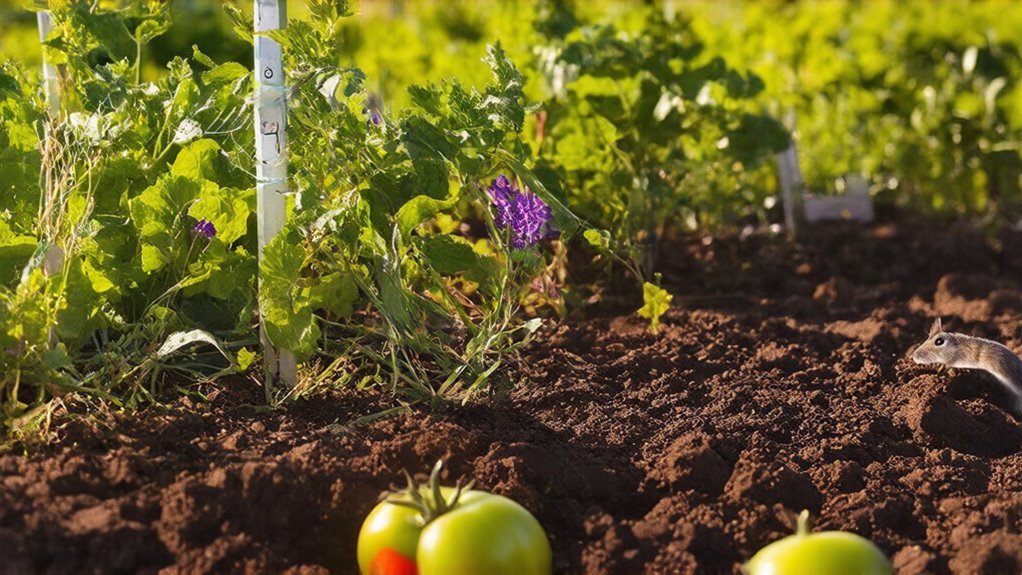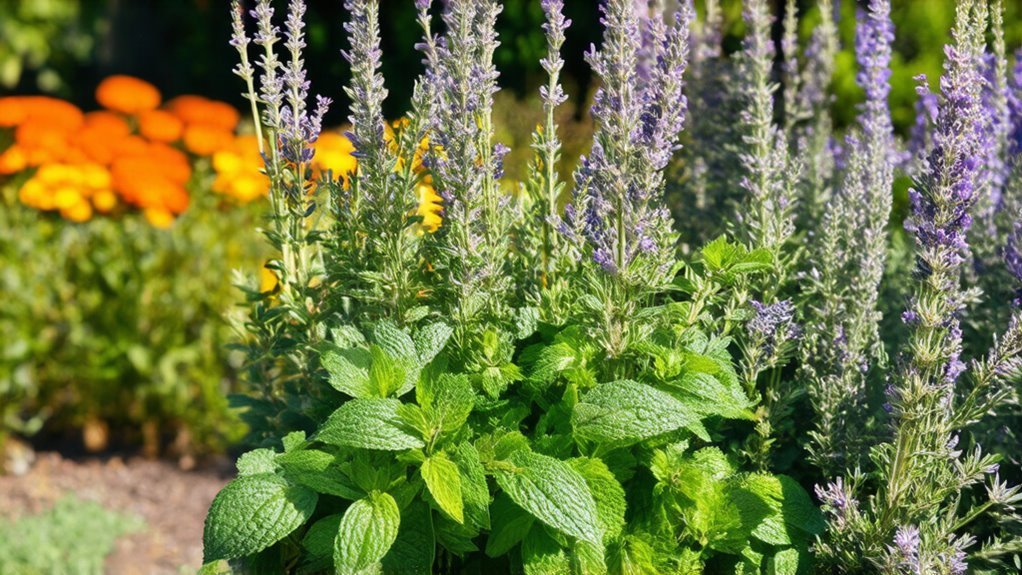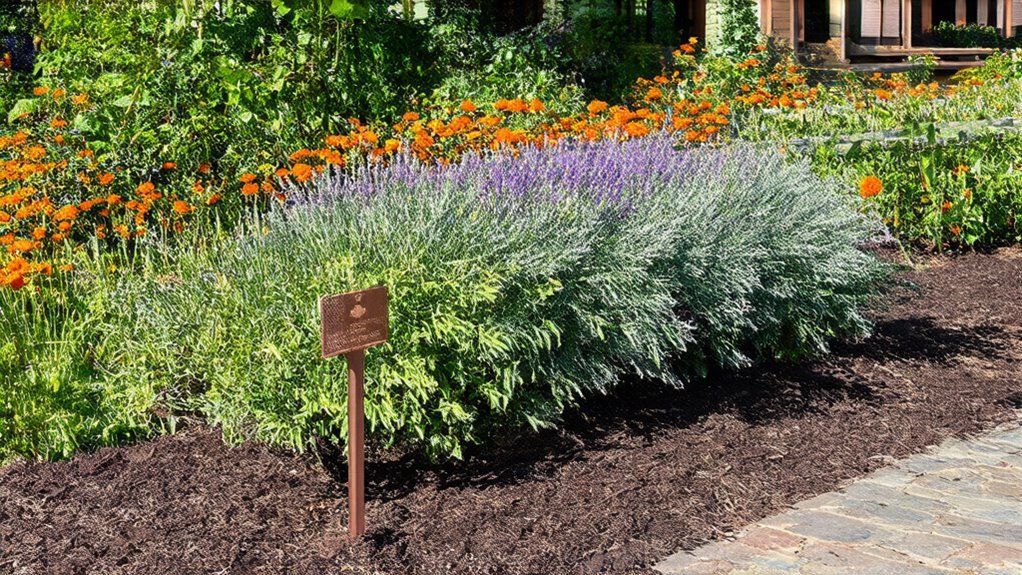Gardeners often face unwanted rodent visitors that damage plants and disrupt growing areas. Nature offers a simple solution through certain plants with properties that repel mice, rats, and other small pests. These botanical deterrents work through strong scents, toxic compounds, or physical characteristics that rodents find unpleasant. The right selection of plants, properly placed, can create protective barriers around gardens without chemicals or traps. But which plants work best, and how should they be arranged?
Some of the links in this article may be affiliate links. If you make a purchase through these links, we may earn a small commission at no extra cost to you. Thank you.
Understanding the Rodent Problem in Gardens

Rodent infestations can quickly become a gardener’s worst nightmare. Field mice and rats can destroy plants, contaminate soil, and create unsightly burrows throughout carefully tended beds.
Understanding rodent behavior is essential for prevention. These pests seek three things: food, shelter, and water.
Prevention starts with understanding what attracts rodents: their constant search for food, shelter, and water.
Common garden attractants include fallen fruits, unsecured compost, and dense ground cover. Rodents prefer hidden pathways along fences or walls and are most active at dawn and dusk.
They reproduce rapidly, with a single pair potentially creating hundreds of offspring yearly. Signs of their presence include droppings, gnawed plants, and small tunnels between garden rows.
Top Plants With Natural Rodent-Repelling Properties

Several natural alternatives exist for gardeners seeking to deter unwanted rodent visitors. Plants with strong scents confuse rodent behaviors while adding beauty to garden aesthetics. Many species contain compounds toxic or irritating to mice and rats.
| Plant | Effect | Maintenance |
|---|---|---|
| Lavender | Repels with strong scent | Low, trim yearly |
| Mint | Deters with intense aroma | High, contains spread |
| Daffodils | Toxic bulbs, avoided by rodents | Minimal, perennial |
These plants work best when strategically placed near entry points and garden borders. For maximum effect, combine multiple repellent species. Most need full sun and well-drained soil to thrive.
How to Strategically Place Repellent Plants in Your Garden

Strategic placement of rodent-repelling plants maximizes their effectiveness throughout the garden.
Focus on creating a protective barrier by planting strong-scented varieties like lavender and mint along the perimeter. This creates a first line of defense against invading rodents.
Use plant placement to target known entry points and high-traffic areas. Place pots of peppermint near compost bins and garden sheds.
In the garden layout, cluster different repellent plants together to intensify their effect.
For maximum protection, alternate tall plants like elderberry with low-growing options such as thyme. This creates a multi-layered defense system rodents find difficult to navigate.
Combining Plant Defenses With Other Natural Deterrents
While plants offer effective rodent repellent properties, combining them with other natural deterrents creates a more robust defense system.
Strategic plant combinations can amplify repellent effects. Companion planting not only deters rodents but also enhances garden health.
- Mix strong-scented plants like lavender and peppermint along garden borders
- Scatter crushed eggshells around vulnerable plants to create uncomfortable walking surfaces
- Place rocks or pebbles in areas where rodents might dig
- Use natural predator urine (available commercially) to create fear responses
- Install cedar mulch that repels with both scent and texture
Seasonal Maintenance of Rodent-Repelling Plants
Maintaining rodent-repelling plants throughout the year requires attention to seasonal changes.
Most repellent species need regular care to remain effective against pests.
Spring calls for seasonal pruning of woody herbs like rosemary and lavender to encourage new growth.
Summer demands consistent watering for plants like mint and thyme to maintain their strong scents.
Fall is ideal for plant rotation, replacing annual deterrents like chrysanthemums with cold-hardy options.
Winter requires moving potted plants indoors and using dried herbs around entry points.
Regular inspection guarantees plants stay healthy across seasons, maximizing their rodent-repelling properties year-round.
Creating a Complete Barrier System With Plants
Creating a complete barrier system with plants requires careful planning and strategic placement. For maximum effectiveness, arrange repellent plants in concentric rings or strategic groupings around the garden perimeter. This layered approach blocks multiple entry points and creates a thorough defense against rodent intrusions.
- Combine tall and low-growing repellent plants for complete coverage
- Implement plant companion strategies like pairing lavender with rosemary
- Install dense plantings of mint or thyme around common entry points
- Consider natural predator introduction by adding plants that attract owls
- Maintain seasonal rotation to prevent rodents from adapting to specific scents
Indoor Applications for Rodent-Repelling Plants
The protective power of rodent-repelling plants extends beyond the garden and into the home. Many plants that deter rodents outdoors work just as well indoors, creating safe barriers at common entry points.
| Plant | Location | Care | Effectiveness |
|---|---|---|---|
| Peppermint | Windowsills | Weekly watering | High |
| Lavender | Doorways | Sunny spot, dry soil | Medium |
| Rosemary | Kitchen | Regular misting | High |
| Citronella | Basements | Indirect light | Medium |
Indoor planting with these natural rodent deterrents offers dual benefits: decorative greenery and pest control. Potted plants can be moved as needed to target problem areas. Remember that fresh plants provide stronger scents than dried versions.
The Environmental Benefits of Plant-Based Rodent Control
Plant-based rodent control offers significant ecological advantages over chemical alternatives. Using natural deterrents like mint, lavender, and daffodils helps maintain ecosystem balance without introducing harmful toxins into the soil or water.
Embrace nature’s own defenses against rodents while protecting our precious ecosystems from chemical harm.
This approach aligns perfectly with sustainable gardening practices, creating a harmonious outdoor space.
- Preserves beneficial insects and pollinators that chemical repellents often harm
- Creates no toxic residue in soil or groundwater systems
- Improves overall biodiversity by adding varied plant species
- Reduces risk to non-target wildlife and domestic pets
- Forms part of an integrated pest management strategy that’s self-sustaining, promoting biodiversity within the garden ecosystem.
Frequently Asked Questions
How Quickly Will I See Results After Planting Rodent-Repelling Plants?
Results vary based on plant growth and repellent effectiveness. Initial deterrence can occur within days as aromatic compounds are released, but maximum effectiveness typically requires several weeks of established growth.
Can Rodents Develop Immunity to Plant-Based Repellents Over Time?
In a world of ever-adapting pests, rodents can indeed develop immunity to plant-based repellents over time. Their adaptive rodent behavior allows for gradual immunity development, requiring gardeners to rotate deterrent strategies periodically.
Will These Plants Harm Beneficial Wildlife in My Garden?
Most natural rodent-repelling plants are selective in their effects, allowing beneficial insects to thrive. When properly incorporated, these plants support the garden ecosystem rather than disrupting beneficial wildlife populations.
Are Rodent-Repelling Plants Effective During Severe Infestations?
Against severe infestations, rodent-repelling plants alone provide limited defense. For effective combinations, homeowners should integrate multiple control strategies, as plant survival rates depend on infestation severity and environmental conditions.
Do These Plants Work Equally Well Against All Rodent Species?
Plant effectiveness varies across rodent species. Some repellents work better against field mice than rats due to size and behavioral differences. Rodent sensitivity to specific plant compounds influences overall species effectiveness.

